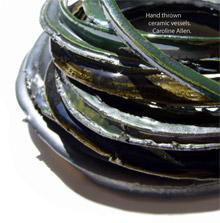Peter Brugger (University of Southampton)
Limited to a presentation of 20 minutes, the object of this talk will be to demonstrate through theoretical exploration as well as practical demonstration what the application of 3 dimensional rapid prototyping technologies (3D printing) can bring to our understanding and appreciation of Bronze Age archaeology.
This talk will be divided into 3 parts. Part 1 will be a rather general introduction; taking a structural and more practical argument. This shall look into the six different types of rapid prototyping introducing the various benefits that the differing technology can bring to this archaeological period. The pace of technological development is such that any recommendation of a particular machine over another will in a year look rather old hat. Therefore, in order to best explain this, the argument shall at first focus on the capabilities of the rapid prototyping machines, the materials used by the printers and any limits to rapid prototyping.
Mindful of time constraints, it is the aim of part 2 to feature a short practical demonstration. For this I shall require, and have brought with me, a 3D printer and a laptop with the appropriate archaeological object scanned in 3 dimensions onto a CAD file. The production cycle of this technology, from start to finish, will of course take a few hours. I therefore proposed that, part 2 shall feature a 3D printer either at the end of its production cycle or having just completed a replica.
Part 3 shall build on part 2, inasmuch as this will be theory building on practical. This will be a short exploration of the benefits that the creation of archaeological replicas can bring to universities and museums. In particular, elaborate upon the reactions of three types of people: academics, curatorial staff, and the museum visitor; looking at opportunities for research, collection management, exploration, and object handling.
“The past is a foreign country; they do things differently there.” A quote from ‘The Go-Between’ by L.P. Hartley, but as a conclusion is all too readily reached by many who view archaeological exhibitions. It is the want of this talk to show that through the application of 3 dimensional rapid prototyping technologies, the above conclusion shall soon change.


